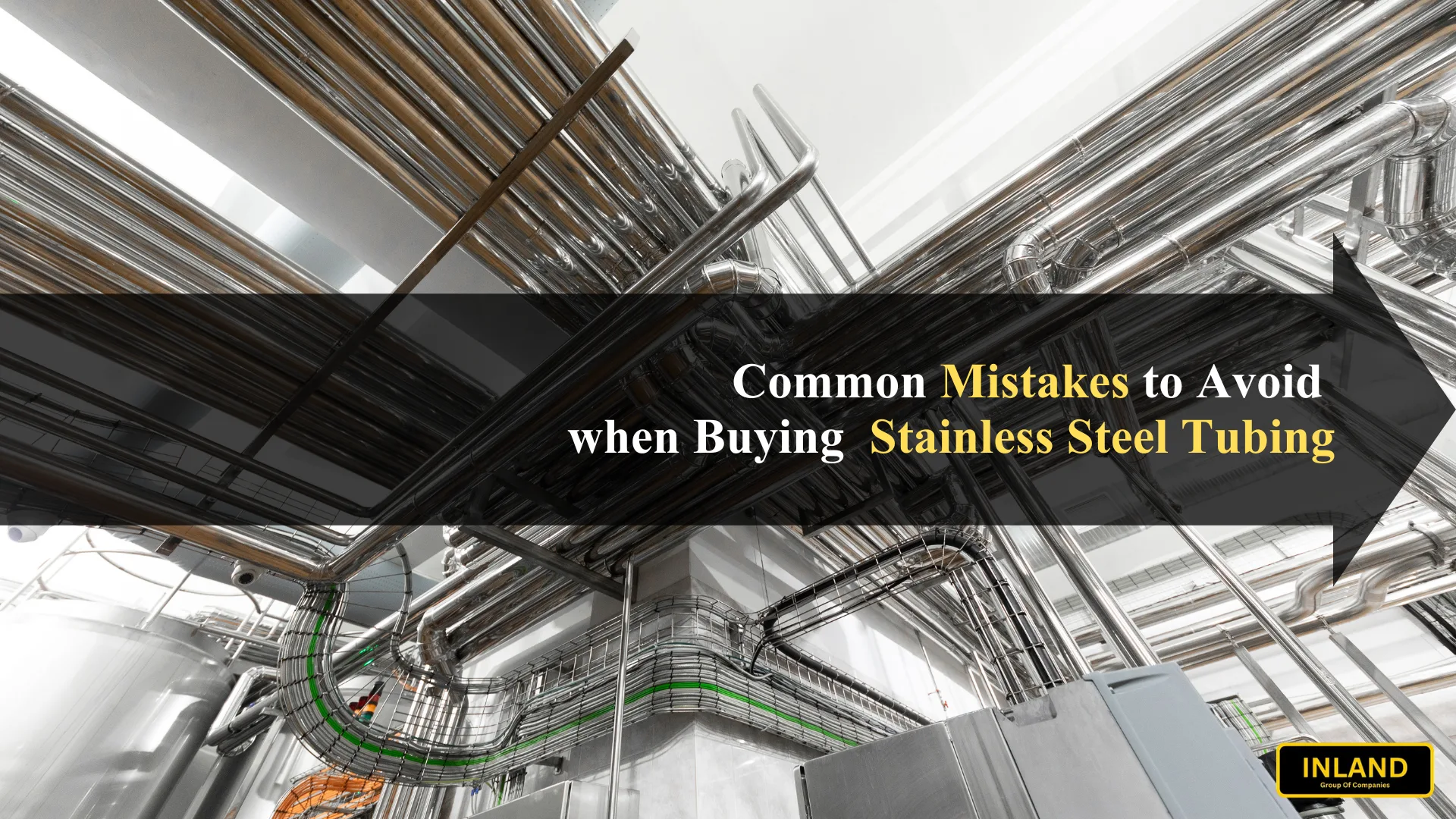Overview
Stainless steel tubing is a critical component across many Malaysian industries, including construction, oil & gas, food processing, and pharmaceuticals. Its strength, durability, and corrosion resistance make it ideal for applications that demand reliability and long-term performance. However, selecting the wrong tubing can lead to operational issues, unexpected downtime, higher maintenance costs, and even safety risks.
To help you make informed decisions, this guide outlines the five most common mistakes companies make when buying stainless steel tubing in Malaysia and how to avoid them. Understanding these pitfalls ensures you choose the right material, maintain efficiency, and protect your investment.
Overlooking Material Grade and Specifications
One of the most common pitfalls is not carefully matching the stainless steel grade to the intended application. Stainless steel comes in different grades, such as 304, 316, duplex, and super-duplex, each with specific corrosion resistance, strength, and temperature tolerance.
For instance, 304 grade is suitable for general-purpose applications, but it may corrode faster in coastal or chemical environments common in Malaysia. In contrast, 316 or duplex grades offer higher resistance to pitting and stress corrosion, making them better suited for more demanding industrial settings.
Always verify the material specifications against the environmental conditions and operational requirements of your project. Consulting technical datasheets or discussing with a trusted supplier can prevent costly mistakes later.
Ignoring Corrosion Risks in Malaysia’s Climate
Malaysia’s tropical climate presents unique challenges for metals, especially stainless steel tubing. High humidity, frequent rainfall, and coastal salt exposure can accelerate corrosion if the wrong material grade is used. Many companies overlook these environmental factors, assuming all stainless steel performs equally, which can lead to premature failures and costly replacements.
Common risks include:
- High humidity: Causes surface oxidation over time.
- Coastal environments: Leads to pitting and crevice corrosion due to salt exposure.
- Chemical exposure: Stress corrosion cracking can occur in industrial or chemical processing areas.
Understanding these risks is critical when selecting tubing. Using the right grade, such as 316 or duplex, and consulting supplier datasheets ensures your tubing withstands Malaysia’s conditions. Proper consideration reduces maintenance, prevents downtime, and extends service life, saving money and improving operational reliability.
Focusing Solely on Price
Price is often the first factor considered when purchasing stainless steel tubing. While it is important to manage costs, making decisions based solely on price can lead to poor outcomes. Lower-cost tubing may initially fit a budget, but it often compromises on quality, corrosion resistance, or tolerance precision.
Cutting corners may result in:
- Premature corrosion in humid or coastal conditions.
- Leakages or failures in high-pressure systems.
- Frequent replacements, increasing long-term costs.
A better approach is to evaluate tubing based on long-term performance, compliance with industry standards, and supplier reliability. Spending slightly more upfront on certified, high-quality tubing can reduce maintenance, prevent operational disruptions, and provide better overall value. In the long run, prioritizing quality over cost ensures safety, efficiency, and durability.
Neglecting Dimensional Accuracy and Tolerances
Dimensional accuracy and proper tolerances are more important than many realize when choosing stainless steel tubing. Even small differences in diameter, wall thickness, or straightness can cause real problems, especially in precise systems like chemical processing, HVAC, or engineering projects. Using tubing with the wrong inner diameter, the incorrect wall thickness, or an uneven surface finish can lead to leaks, inefficiencies, or even costly downtime.
The best way to avoid these issues is to check with your supplier for dimensional certificates or tolerance reports before making a purchase. Confirming that the tubing meets your system’s exact requirements helps prevent installation headaches, ensures smooth operation, and extends the lifespan of the components.
Skipping Supplier Evaluation
Finally, many companies overlook the importance of choosing a reputable supplier. Not all suppliers provide consistent quality, technical support, or compliance documentation. Working with unreliable sources can lead to material inconsistencies, shipment delays, and safety risks.
What to look for in a supplier:
- Proven experience in supplying stainless steel tubing in Malaysia
- Transparent technical datasheets and certifications
- Strong customer support and after-sales service
A trusted supplier ensures you get the right tubing for your application and provides guidance if you encounter issues during installation or operation. For more information on reliable sources, you can explore Stainless steel tubing Malaysia.
Why Choose Alleima Stainless Steel Tubing?
After avoiding common mistakes, selecting a reliable supplier is crucial. Alleima stainless steel tubing stands out in Malaysia for quality, durability, and support:
| Feature | Alleima | Other Brands |
| Material | Certified 304, 316, duplex | Often limited or inconsistent |
| Corrosion Resistance | High for humid/coastal environments | May corrode faster |
| Accuracy | Precise dimensions and tolerances | Possible deviations |
| Supply | Reliable in Malaysia | Stock/delivery issues |
| Longevity | Longer lifespan, lower maintenance | Frequent replacements |
Choosing Alleima stainless steel tubing Malaysia ensures durable performance, lower maintenance, and reliable technical support.
Conclusion
Buying stainless steel tubing in Malaysia requires careful attention to material grade, environmental conditions, dimensional accuracy, budget, and supplier reliability. Avoiding common mistakes ensures your tubing is durable, efficient, and suited to the specific demands of your project.
For the best results, work with experienced suppliers who can guide you in selecting the right tubing for your needs. Explore Inland to find high-quality, reliable options that withstand Malaysia’s unique environmental conditions and support safe, cost-effective operations.
About the Author

The Inland Technical Insights Team draws on three decades of experience in servicing the oil, gas, petrochemical, power-plant, and instrumentation sectors in Malaysia and Southeast Asia. Founded in 1995 and licensed by national authorities, Inland provides not only premium stainless-steel tubing and instrumentation components but also engineering support, on-site fabrication, and system design services.

